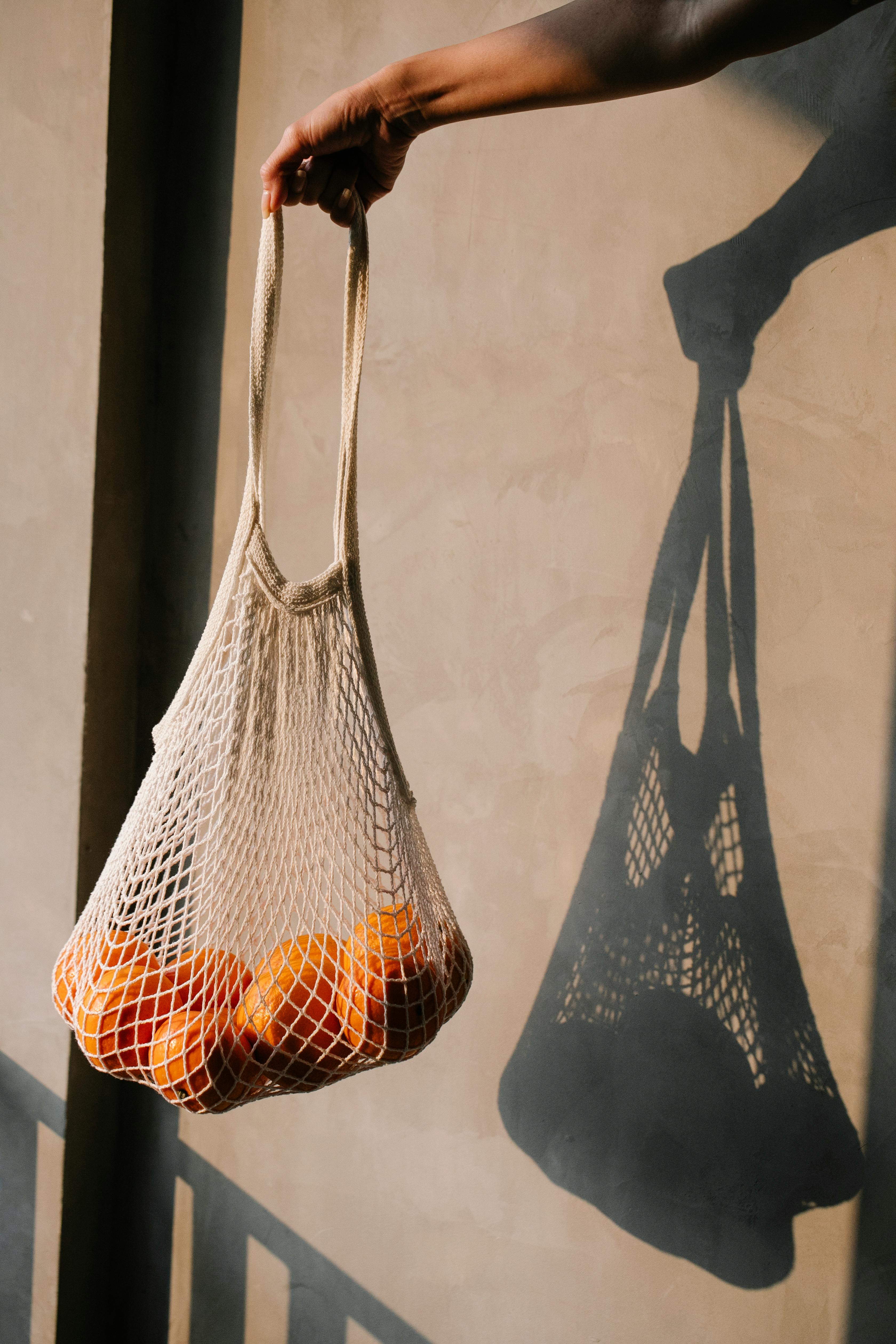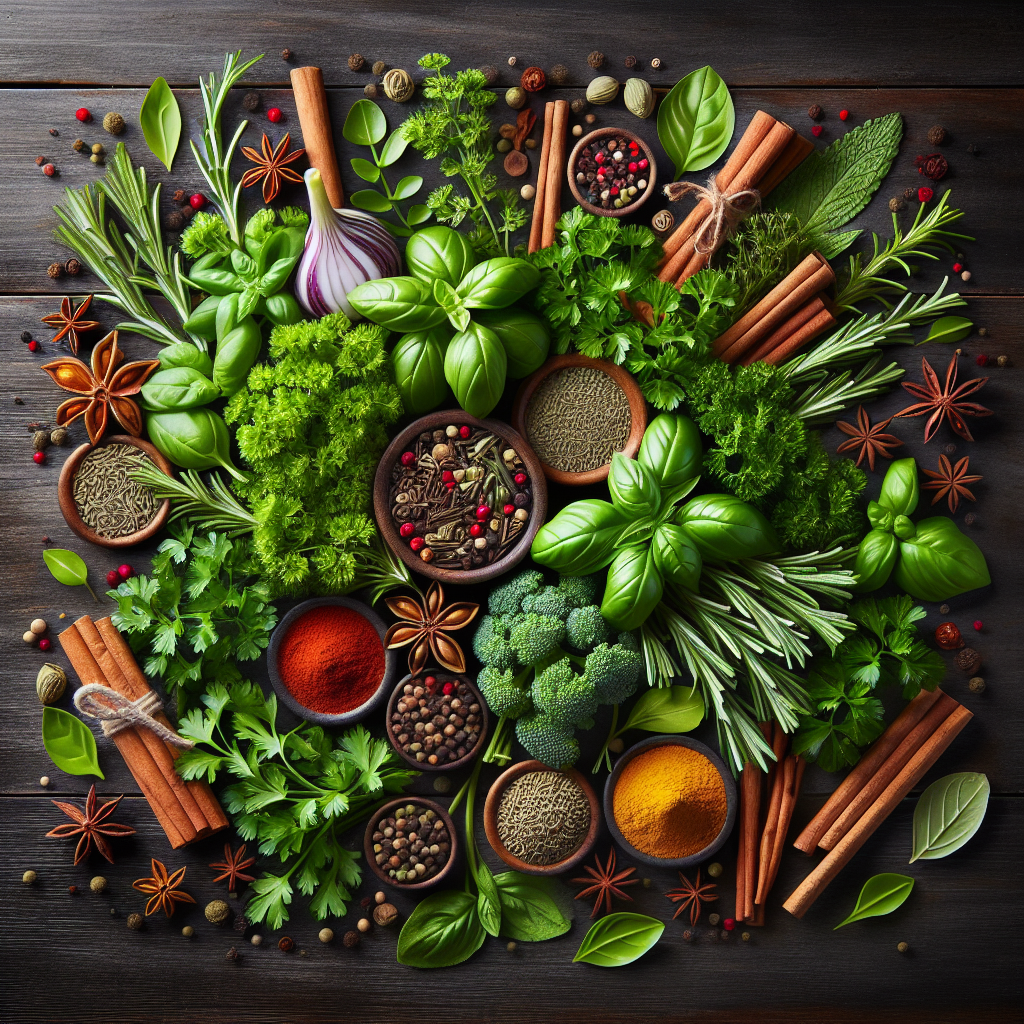In this article, you will discover the exciting world of cooking with herbs and spices and explore the endless flavor combinations they offer. Whether you’re a seasoned chef or just starting out in the kitchen, incorporating herbs and spices into your dishes can elevate your cooking to new heights. From classic pairings like rosemary and garlic to more adventurous combinations like cumin and coriander, we will guide you through the art of flavor pairing and show you how to create delicious, aromatic meals that will have your taste buds singing. Get ready to embark on a culinary journey that will transform your cooking experience.

Understanding Herbs and Spices
Difference between herbs and spices
When it comes to cooking, herbs and spices play a vital role in enhancing the flavors of our dishes. But what exactly is the difference between herbs and spices?
Herbs are derived from the leaves of plants and are typically used fresh or dried. They add a fragrant and delicate flavor to dishes, and some popular herbs include basil, parsley, rosemary, and thyme. On the other hand, spices are made from the seeds, bark, roots, or fruits of plants and are often used in powdered form. Spices tend to have a stronger and more intense flavor compared to herbs. Examples of common spices include cinnamon, cumin, paprika, and turmeric.
Commonly used herbs
There are countless herbs available for culinary use, each adding its own unique flavor profile to dishes. Here are some commonly used herbs and their characteristics:
- Basil: Known for its sweet and slightly peppery taste, basil is a versatile herb that pairs well with tomatoes, cheese, and pasta dishes.
- Rosemary: With its strong and aromatic flavor, rosemary is perfect for roasted meats, potatoes, and stews.
- Parsley: Often used as a garnish, parsley adds a fresh and vibrant taste to salads, soups, and sauces.
- Cilantro: Commonly found in Mexican and Asian cuisines, cilantro has a bright and citrusy flavor that complements dishes like salsa and curry.
These are just a few examples, but the world of herbs is vast and diverse, offering endless possibilities for flavor combinations.
Commonly used spices
Just like herbs, spices bring depth and complexity to dishes. Here are some commonly used spices and their characteristics:
- Cinnamon: This warm and sweet spice is perfect for adding a touch of sweetness to desserts, oatmeal, and hot beverages.
- Cumin: With its earthy and nutty flavor, cumin is a staple in many cuisines, including Indian, Mexican, and Middle Eastern dishes.
- Paprika: Known for its mild and slightly sweet taste, paprika is often used in soups, stews, and as a garnish for deviled eggs.
- Turmeric: With its vibrant yellow color and mild flavor, turmeric is commonly used in curries and adds a beautiful hue to rice and vegetable dishes.
These are just a few examples of commonly used spices, but there is a whole world of spices waiting to be explored and incorporated into your cooking creations.

Creating Flavor Combinations
Matching herbs and spices with different types of cuisine
One of the joys of cooking is experimenting with different flavor combinations, and herbs and spices play a crucial role in this creative process. Each cuisine has its own unique blend of herbs and spices that contribute to its distinct taste. Here are some examples of matching herbs and spices with different types of cuisine:
-
Italian Cuisine: Basil, oregano, and thyme are staple herbs in Italian cooking, while garlic and rosemary are commonly used spices. These ingredients bring a rich and savory flavor to dishes like pasta sauces, pizza, and risotto.
-
Indian Cuisine: Cumin, coriander, turmeric, and garam masala are some of the key spices in Indian cuisine. They add warmth and complexity to dishes like curries, biryanis, and lentil soups.
-
Mexican Cuisine: Cilantro, cumin, chili powder, and oregano are frequently used herbs and spices in Mexican cooking. They lend a vibrant and bold flavor to dishes such as tacos, enchiladas, and salsa.
By understanding which herbs and spices are traditionally used in different types of cuisine, you can create authentic and flavorful dishes that transport your taste buds to different parts of the world.
Pairing herbs and spices with specific ingredients
To elevate the flavors of your dishes, it’s important to consider which herbs and spices pair well with specific ingredients. Here are some examples of successful herb and spice pairings:
-
Chicken: Thyme, rosemary, and garlic are excellent choices for enhancing the flavor of chicken. These herbs and spices work well whether you’re roasting, grilling, or sautéing chicken.
-
Fish: Lemon, dill, and parsley are classic herbs that pair beautifully with various types of fish. These herbs lend a fresh and bright flavor to seafood dishes.
-
Lamb: Mint, garlic, and cumin are often used to complement the rich and gamey flavor of lamb. Whether you’re grilling lamb chops or preparing a slow-cooked stew, these herbs and spices are sure to enhance the taste.
Exploring the world of herb and spice pairings opens up a whole new realm of culinary possibilities, allowing you to create harmonious and well-balanced flavors in your dishes.
Exploring regional flavor profiles
Every region has its own distinct flavor profile, and herbs and spices play a key role in defining these regional cuisines. Whether you’re exploring the bold flavors of Mexican cuisine, the delicate nuances of Japanese cooking, or the fragrant spices of Indian dishes, understanding regional flavor profiles can inspire your culinary creations.
For example, Mediterranean cuisine often incorporates herbs like thyme, oregano, and rosemary, giving dishes a light and fresh taste. In contrast, Middle Eastern cuisine utilizes spices such as sumac, za’atar, and cardamom, creating warm and aromatic flavors.
By delving into various regional cuisines and experimenting with their unique herb and spice combinations, you can broaden your culinary horizons and bring a world of flavors to your table.

Herb and Spice Mixtures
Popular herb and spice mixtures
Sometimes, using a pre-made herb and spice mixture can be a convenient way to add flavor to your dishes. Here are some popular herb and spice mixtures and their characteristics:
-
Italian Seasoning: A blend of herbs such as basil, oregano, thyme, and rosemary, Italian seasoning is perfect for giving dishes an authentic Italian flavor. It works well in pasta sauces, marinades, and salad dressings.
-
Herbs de Provence: This French herb blend typically contains savory, thyme, rosemary, marjoram, and lavender. It adds a fragrant and floral touch to roasted meats, vegetables, and even baked goods.
-
Cajun Seasoning: A staple in Creole and Cajun cuisines, Cajun seasoning is a fiery blend of paprika, cayenne pepper, garlic powder, and other spices. It adds a bold and spicy kick to seafood, poultry, and jambalaya.
These are just a few examples of popular herb and spice mixtures that can save you time in the kitchen while still delivering delicious flavors.

